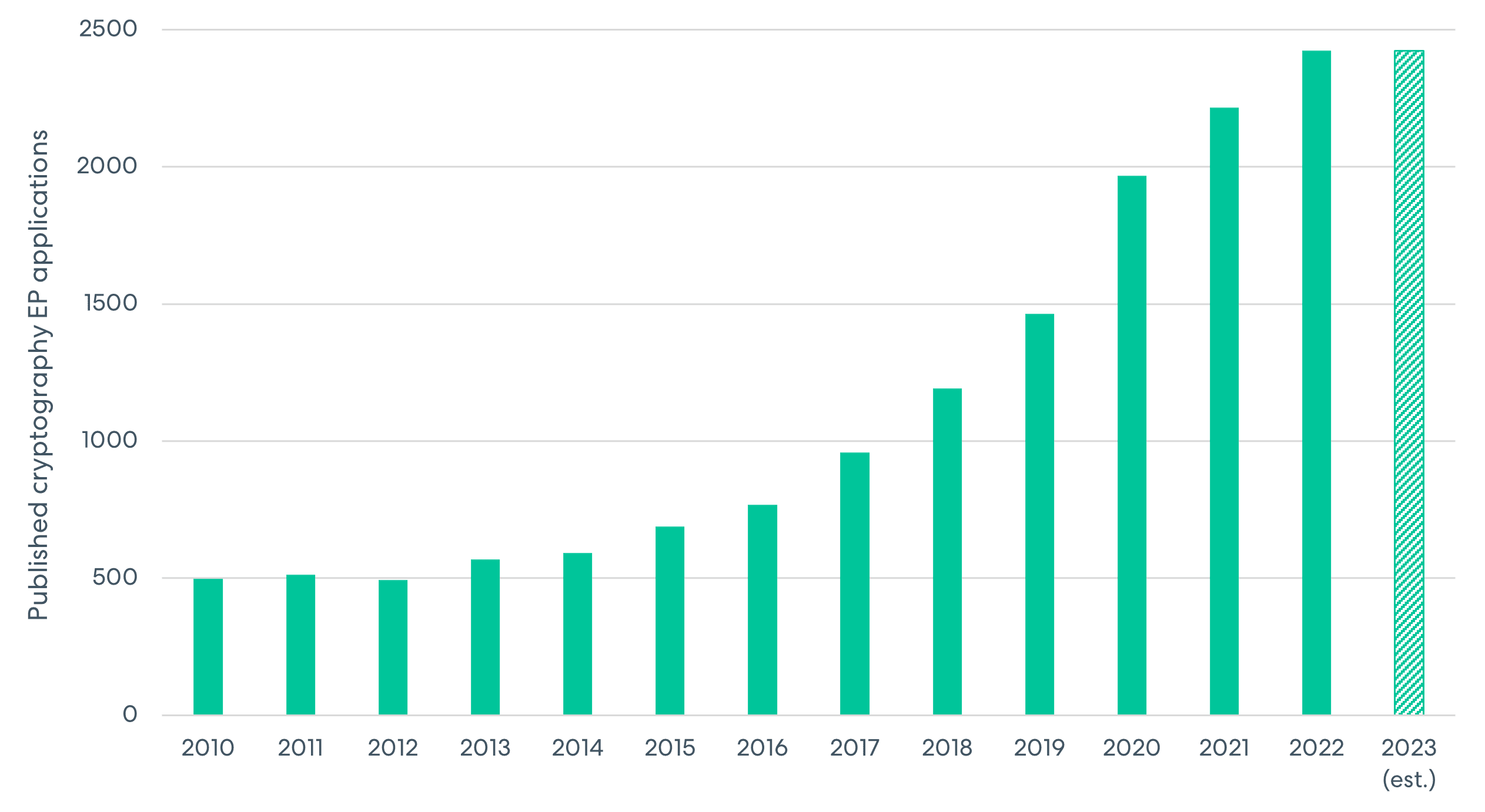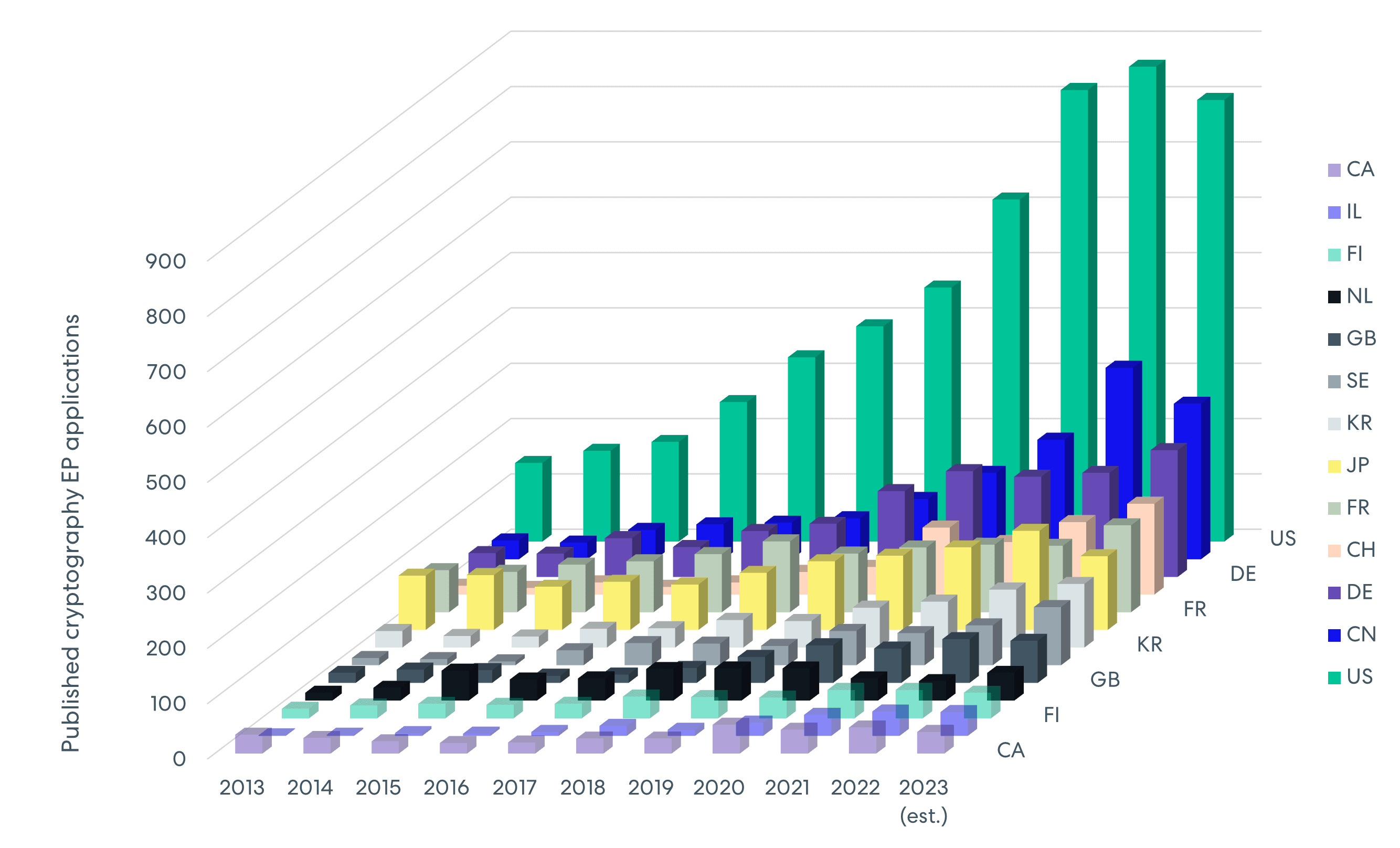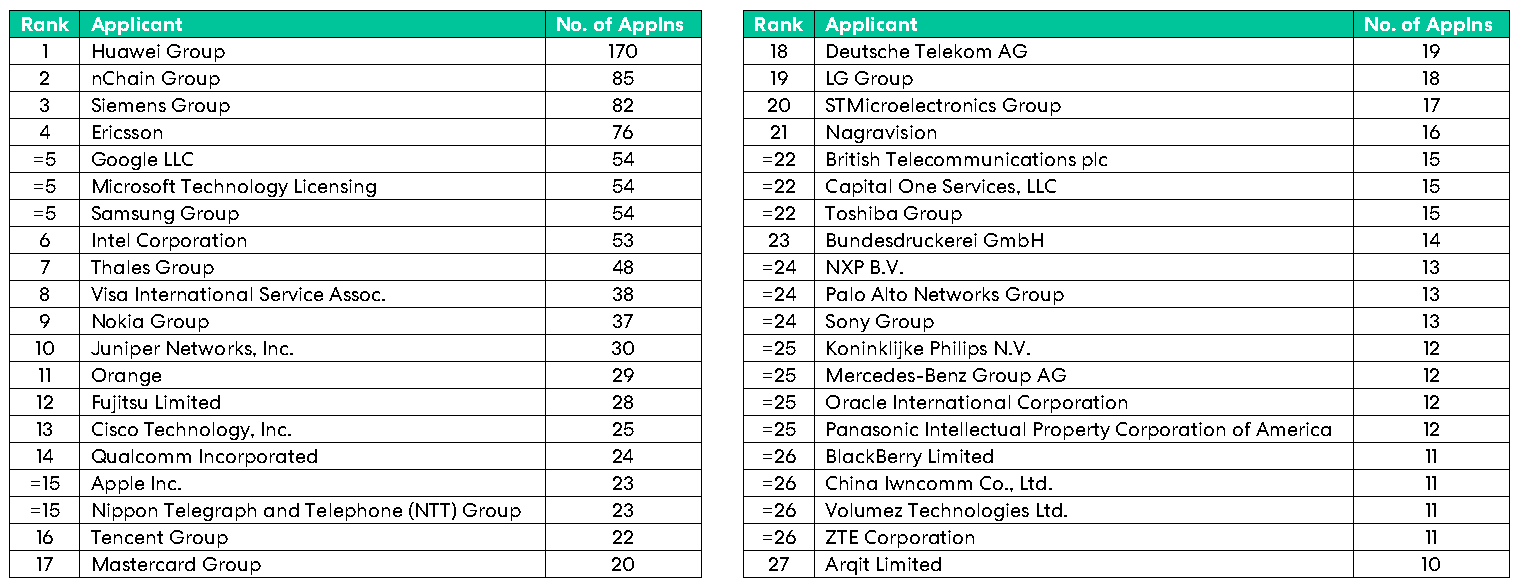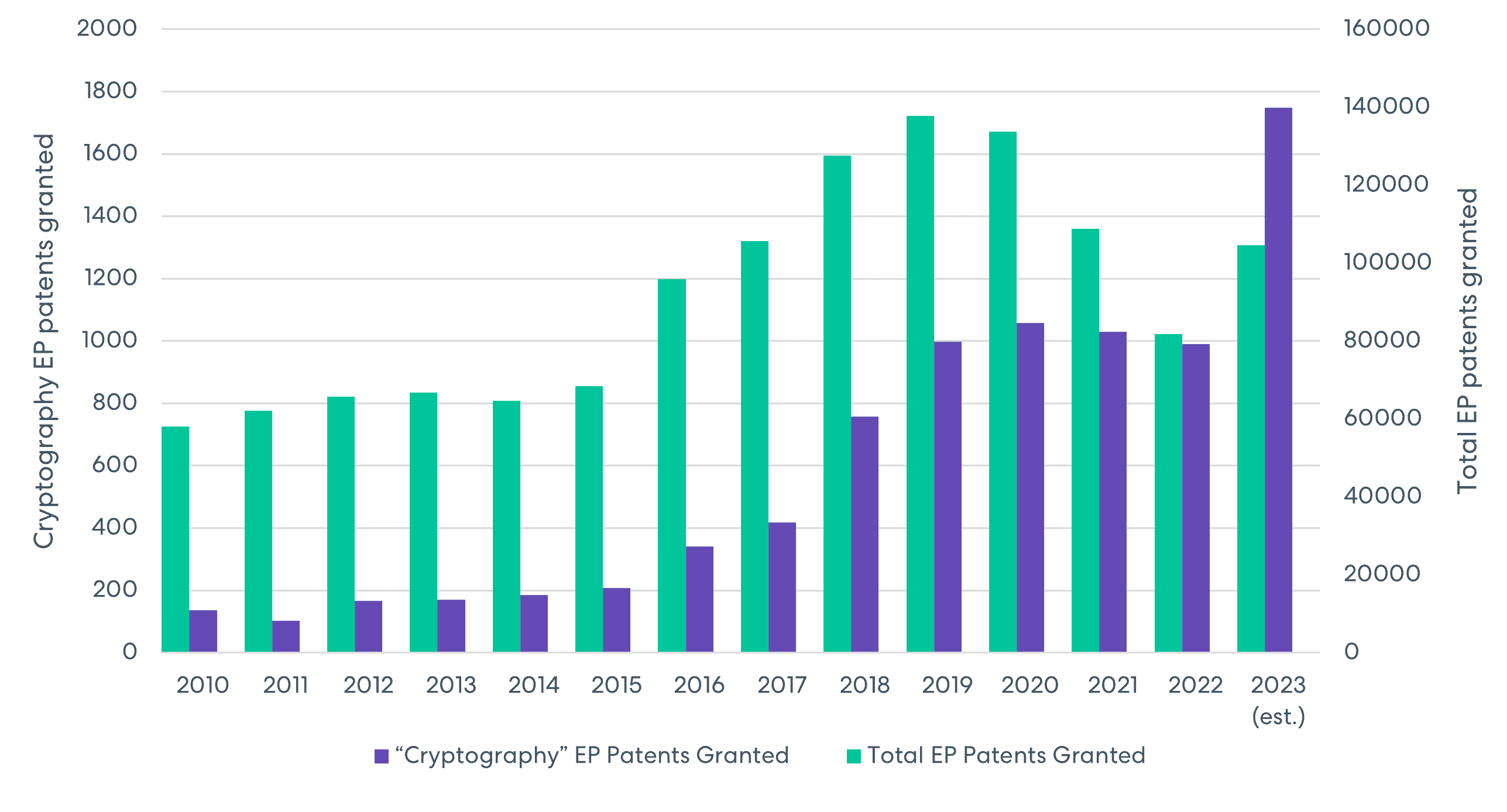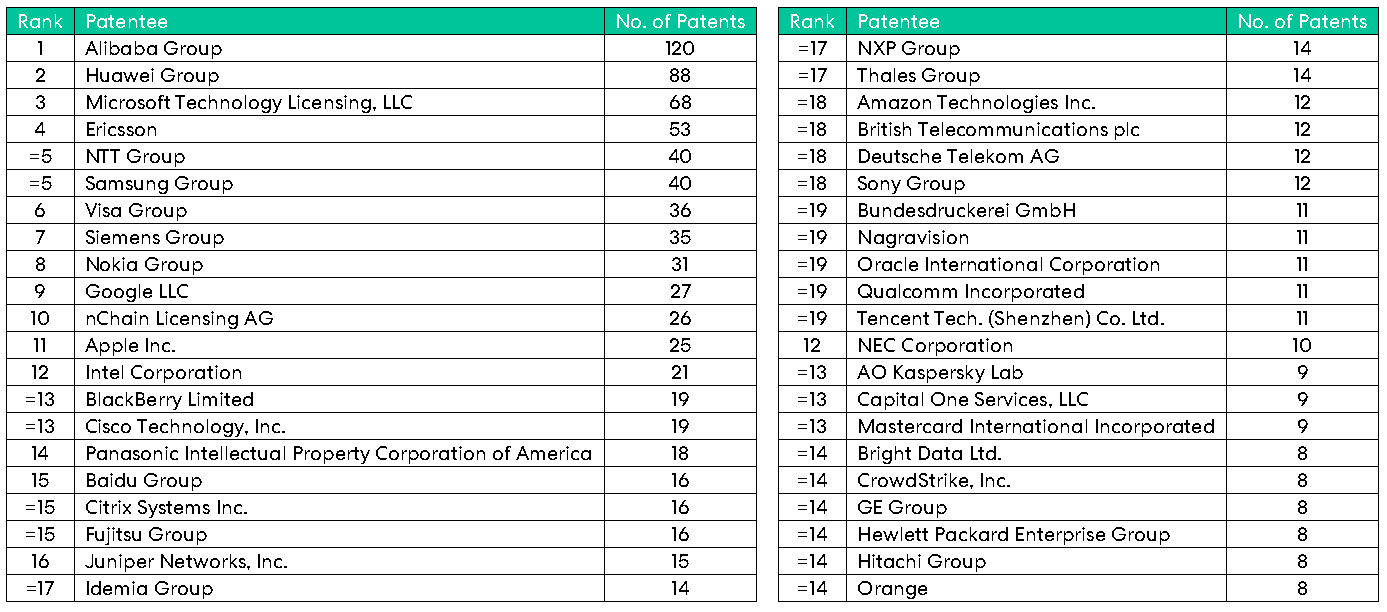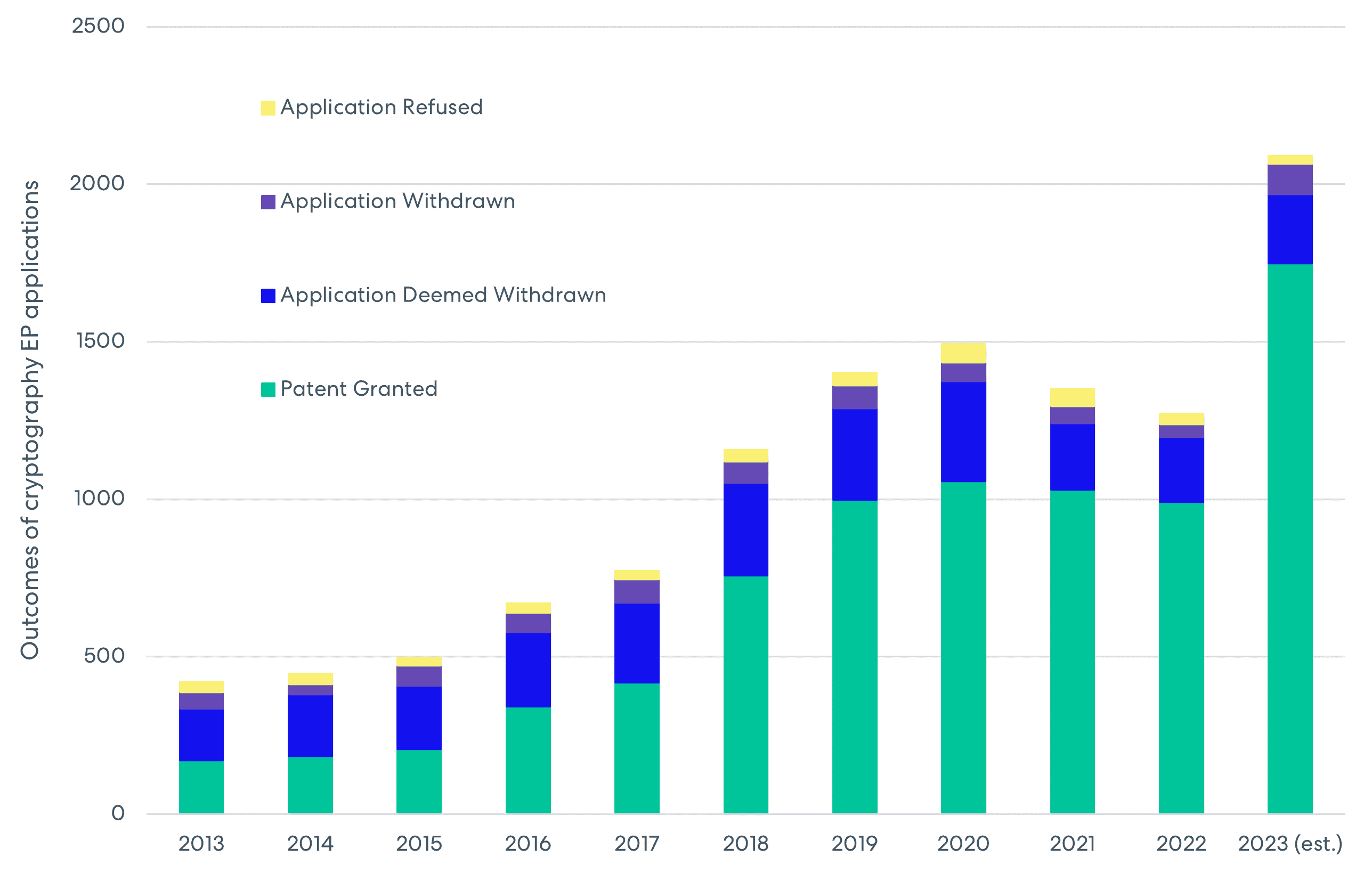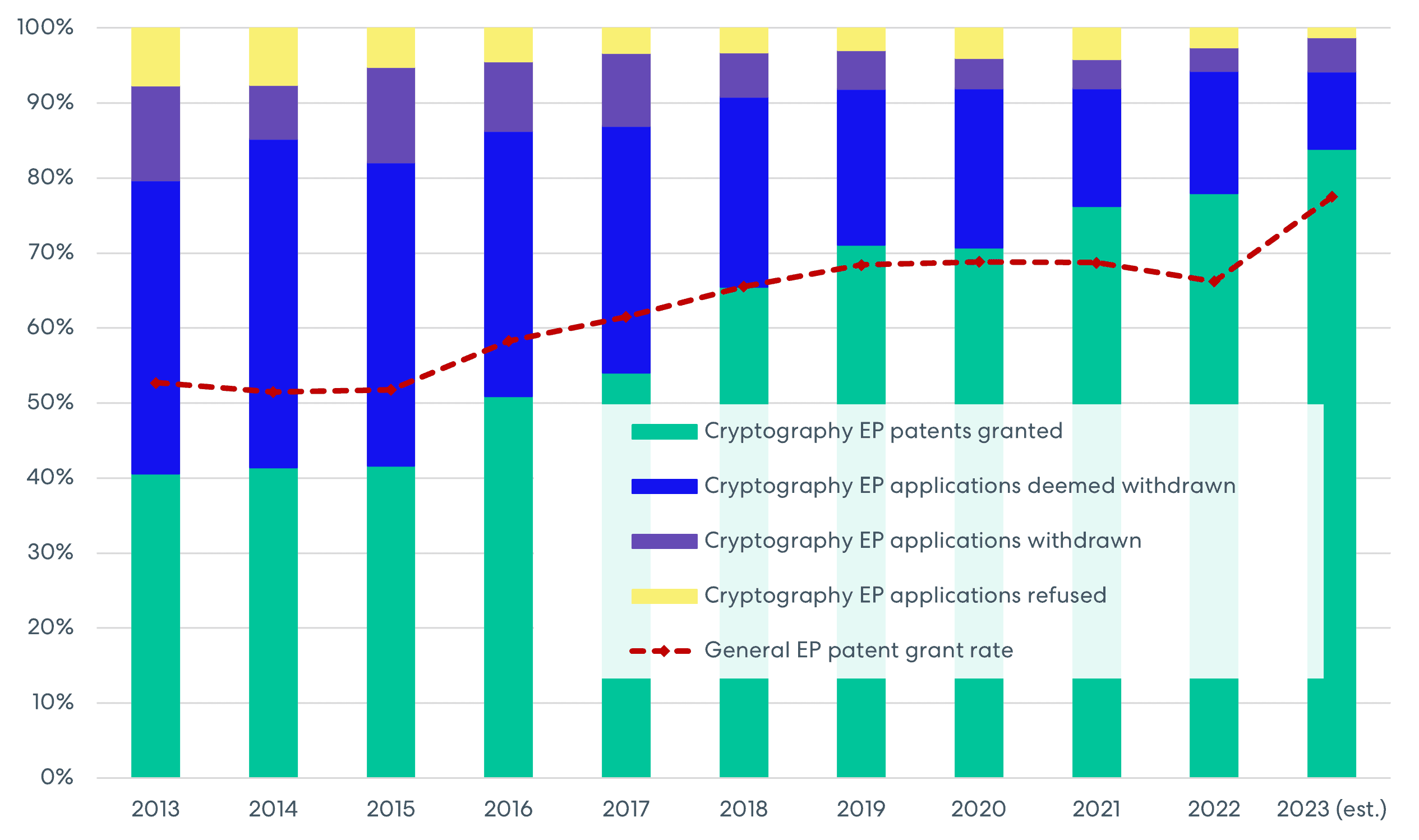
Forget secret military codes and Enigma machines[1], these days cryptography underpins the internet and mobile communications networks and is all about computer-implemented mathematical methods. These methods also play key roles in applications from online banking, payments and shopping to instant messaging systems such as WhatsApp and Signal. Additional interest in applications of cryptography in recent years may have been driven – as might be suggested by the name – by cryptocurrencies and by related blockchain technologies.
Fortunately, the EPO seems to have recognised that computer-implemented mathematical methods of cryptography can generally be considered to be “technical”, i.e. to make “technical contributions” and produce “technical effects” serving “technical purposes”[2]. Cryptographic methods seem to sidestep EPO orthodoxy that mathematical methods and computer software (programs for computers) are “non-technical” and excluded “as such” from patentability.
Cryptographic patent application trends
Because cryptography and its uses fit reasonably well with a few classifications under the IPC (International Patent Classification) and CPC (Cooperative Patent Classification) systems, we can track the growth in numbers of published European patent applications concerned with cryptography[3].
The number of “cryptography” European patent applications published in 2022 (approx. 2,400) was more than quadruple the number published in 2013 (approx. 550)[4]. By comparison, the total number of European patent applications published in 2022 (approx. 195,000) was (only) about 30% higher than in 2013 (approx. 150,000). In other words, although cryptography European patent applications continued to make up only a very small fraction of all European patent applications, over the ten year period 2013 to 2022 the proportional growth cryptography applications was ten times the general growth in applications. The number of cryptography European patent applications published in 2023 will likely at least equal the number published in 2022[5].
Figure 1 Published cryptography EP applications 2010 – present
Regional cryptographic patent application activity
Over the period 2013 to 2022 (and estimated through to 2023), applicants from the USA were by far the most active in terms of numbers of published cryptography European applications. In 2023, estimates place applicants from China to be second most active, followed by Germany, Switzerland, France, Japan, Korea, Sweden, United Kingdom, Netherlands, Finland, Israel and Canada. Together, applicants from these counties account for around 90% of published cryptography European applications over the period 2013 to 2023.
Figure 2 Regional breakdown of published cryptography EP applications 2013 – present
Cryptographic EP applicants
Around 2,400 cryptography European applications were published in 2023. Around 750 applicants were involved. The top ten applicants accounted for a quarter of the applications published. The top 40 applicants accounted for half the applications published.
Remarkably, in 2023 the top applicant, Huawei, accounted for around 7% of all published cryptography European applications and twice the number of published cryptography European applications as the next most active applicant, nChain.
Table 1 cryptography EP applications published 2023 – Top 40 applicants
Cryptographic patent trends – a huge increase in grants in 2023
The number of cryptography European patents granted in 2022 (approx. 1,000) was more than five times the number granted in 2013 (approx. 170). By comparison, the total number of European patents granted in 2022 (approx. 82,000) was about 25% higher than in 2013 (approx. 67,000). Over the ten year period 2013 to 2022, the proportional growth of cryptography patents granted was twenty times the general growth in patent grants.
Grants of cryptography patents fell somewhat (approx. 6%) from 2020 to 2022 but proportionally nothing like the percentage fall (approx. 40%) in total patent grants from 2020 to 2022.
According to information available, at the end of 2023 there was a recovery in total patents granted compared to total grants in 2022 (around an additional 23,000 grants or a 28% increase). However cryptography patents granted in 2023 were an astonishing 75% higher than in 2022, jumping from about 1,000 grants in 2022 to almost 1,750 grants in 2023.
Figure 3 Cryptography EP patents granted v total EP patents granted
Cryptographic EP patentees
Between 500 and 600 patentees received 1,750 cryptography patents in 2023. The top two patentees accounted for about 12% of those patents. The top ten applicants accounted for 30%. The top 42 patentees accounted for 55% of the cryptography patents granted.
Table 2 cryptography EP patents granted 2023 – Top 42 patentees
Interestingly, in spite of Alibaba’s top spot in the number of EP patent grants in 2023, Alibaba are nowhere to be seen in the top EP patent application publications table above: there were just 8 Alibaba Group cryptography EP applications published in 2023.
Outcomes of cryptography EP applications – improved chance of grant
Aside from patent grant, EP applications may be refused, withdrawn, or deemed withdrawn. Looking at cryptography EP applications year by year from 2013 to 2022, these three outcomes have varied somewhat in number – but unremarkably so in comparison to the changes to the numbers of cryptography patents granted.
Figure 4 Absolute outcome of EP cryptography patent applications
The result is that EP patent grant was the outcome for nearly 80% of cryptography applications processed to any one of the final outcomes in 2022. This 80% grant rate compares to a 40% cryptography grant rate in 2013. From 2019 to 2022, grant rates between 70% and 80% for cryptography applications compare favourably with grant rates for EP applications in general, which did not exceed 70%.
Figure 5 Relative outcome of EP cryptography patent applications
Information available at the end of 2023 on the number of grants and the number applications withdrawn should be reasonably stable and not subject to great revision. The same cannot be said of the numbers of applications refused and deemed withdrawn, which may be subject to significant upward revision. This means that grant rates for 2023, for cryptography applications or applications in general, are not yet settled and can be expected to fall from the rates indicated by information available at the end of 2023 (cryptography applications 85%; applications in general 77%).
Cryptographic EP outlook
Even if we dismiss the astonishing increase in the number of cryptography applications granted in 2023 as a transient quirk in EPO operations, grant rates for cryptography applications in recent years seem to indicate that the EPO has recognised that computer-implemented cryptographic mathematical methods can be considered to be “technical”. This escape from the EPO’s generally negative stance on patenting software inventions is good news for innovators in the cryptography space worldwide.
[1] Surprisingly, perhaps, the Enigma machine was patented and public in the 1920s. See e.g. https://patents.google.com/patent/US1657411
[2] For example the Guidelines for Examination at the EPO, March 2023, Part G, Charter II, 3.3 Mathematical Methods, say:
Examples of technical contributions of a mathematical method are: […] encrypting/decrypting or signing electronic communications; generating keys in an RSA cryptographic system;
In relation to computer-implemented inventions, Part G, Charter II, 3.6.1 Examples of further technical effects, says:
If a method has a technical character over and above the mere fact that it is computer-implemented, a corresponding computer program specifying that method produces a further technical effect when run on a computer. For example, a computer program which specifies a method of […] encrypting electronic communications brings about a further technical effect when it is run on a computer (see G-II, 3.3).
[3] The main cryptography IPC/CPC Classifications are H04L 9/00 to H04L 9/38 (Transmission of digital information; arrangements for secret or secure communication) and G09C 1/00 to 5/00 (Ciphering or deciphering apparatus for cryptographic or other purposes involving the need for secrecy).
[4] This and subsequent data are based on information in the EP Bulletin Search database.
[5] the number of applications published in 2023 and allocated to the main cryptography IPC/CPC classifications is liable to change as applications are subject to search and examination and possibly reclassified.
This is for general information only and does not constitute legal advice. Should you require advice on this or any other topic then please contact hlk@hlk-ip.com or your usual HLK advisor.

